INTRODUCTION
Celebrity Endorsement remains a hotly debated but equally ubiquitous marketing strategy.
Consider the below stats:
Celebrity endorsements saw a 44% rise in 2021 as opposed to 2020, according to the data released by AdEx India, a division of TAM Media Research. As per the report, 27% of the overall ad volume share on TV were celebrity endorsements.
In addition, the Celebrity Brand Valuation* report (2021) by Duff & Phelps indicates that:
– The total brand value of the top 20 celebrities was $1.2 billion, in 2021.
– The share of brand endorsements for digital brands and start-ups has increased by more than 50% y-o-y from 2020 among the top 20 celebrities.
Collating insights from our in-depth interactions with 1000s of consumers across 35+ categories, brand managers and startup founders, we at BusyBeeBrands have condensed our thoughts on the much-debated topic of celebrity endorsements into this white paper.
We hope this paper gives you actionable insights into the pros, pitfalls and principles of celebrity endorsement.
For the purpose of this article ‘Celebrity’ refers to personalities from the world of sports, entertainment etc. who carry mainstream awareness due to their achievement and salience in their respective fields.
CHAPTER 1
Celebrity Endorsement: The Changing Context
India- a celebrity obsessed nation
In a diverse country like India, the reach and impact of celebrities often transcend cultural and geographical boundaries. The culture of admiration and adulation for celebrities has withstood the test of time.
It’s not an exaggeration when the popular narrative states that India is a celebrity obsessed nation. And for almost as long as celebrities have ruled fans’ hearts in India, brands have leveraged celebrities to gain consumer acceptance.
For decades a symbiotic ecosystem has existed between four stakeholders – Media, Consumers, Brands and Celebs.

However, this symbiotic relationship is being challenged by multiple changes in landscape:
1. When it comes to media, the power equation is shifting towards the consumer
Data democracy and digital penetration have fundamentally disrupted media consumption habits.
The media landscape is fragmented on many levels- in terms of demographics (where every age group is curating its own ‘playlist’), channels (from OTT to YouTube and FB to Instagram) and even devices (TV, Mobile Phones, Laptops, Tabs). To complicate matters further, in the new-age media paradigm the power equation is shifting towards consumers- they can opt for ad-free content or choose to Skip ads.
Net, the era of finding a ‘captive’ audience is fast coming to an end. Brands can no longer ride on a single media/channel and hope to get massive eyeballs from appointed family viewing.
However, despite its seemingly humungous challenges, changing media landscape also offers a great opportunity. If the content is good, consumers today travel an extra mile to search for, view and even evangelize it. This means that brands have a greater chance to garner organic word of mouth provided they put out the right content.
Indeed, when it comes to media, the adage ‘Content is King’ is a literal truth today.

2. On the consumer front, we are seeing the rise of a curious, informed and demanding consumer
With the data and smartphone boom, there is an escalation of expectations across demographics and town classes. The Rating & Review economy is making consumers feel empowered to not only choose what’s best for them but also get their voice heard in case they aren’t satisfied with the product experience.
Further, they are increasingly skipping intermediate steps to seamlessly adopt the latest trends (e.g., moving directly from cash to payment apps and from offline shopping to app-only shopping).
All this has led to the rise of a curious, informed and demanding consumer- one who feels both entitled and empowered to get the best within his/her money without a sense of compromise. At the same time, the proliferation of choices has also increased information overload. Consumers want to simplify their lives and seek easy levers for decision-making.

3. When it comes to brands, imaginative, impatient, and insurgent brands are battling it out with salient, slow, legacy brands
Interestingly, when we see the outlook of brands towards the evolving consumer and media landscape, two cohorts emerge- the traditional and established brands and the new-age venture backed startups. These cohorts are trying to simultaneously compete with as well as learn from each other.
Being digital-first, the new-age startups have a better understanding of digital media and performance marketing. They are trying to disrupt the traditional brand building playbook and quickly steal share from established brands. However, lacking patience, tenacity and time, many of them resort to transactional tactics rather than focusing on building enduring relationships with their customers.
Established brands on the other hand come with a legacy of salience and stature that’s nurtured over years, often even over decades. While they are trying to defend their turf, they are also envious of and are trying hard to emulate the agility and digital-savviness of new-age brands.

4. Finally, when it comes to celebrities, we are seeing the end of a ‘Perfect’ celebrity
Today almost every celebrity worth his or her salt has a strong social media presence, with the number of social media followers becoming a de-facto signal of their fame and popularity.
Being connected 24×7 to their fandom, celebrities cannot hide behind a make-believe façade. They are expected to have an opinion, a point of view and a clear take on almost everything that’s trending- from politics to personal life. The private and public personas of celebrities are increasingly merging.
Rather than reel persona, celebrity persona today is built by what they say or do in real life. And celebrities are quite mindful about curating it through their actions.
Celebrities today aren’t shy about showcasing their authenticity and talking about their vulnerabilities. Whether it be Deepika opening up about her struggle with mental health on social media, Ranveer proudly flaunting his rather colourful personality and a sense of style that accentuates it, or Kangana making her political stance clear in the public domain- all these give a sharp edge to their personalities and create a legion of passionate followers as well as detractors.
But social media is also a two-way street. Fans can quickly turn into vicious critics if the celebrity does something that’s not in sync with her professed beliefs. With a strong pulse on the mood of their fans and with high stakes riding on it, celebrities are conscious and concerned about their reputation. Recently we have seen cases of A-list celebrities (including Virat Kohli, Akshay Kumar and Amitabh Bacchan) issuing clarifications and calling off their associations with the brand in light of pushback from their followers, in full public glare.
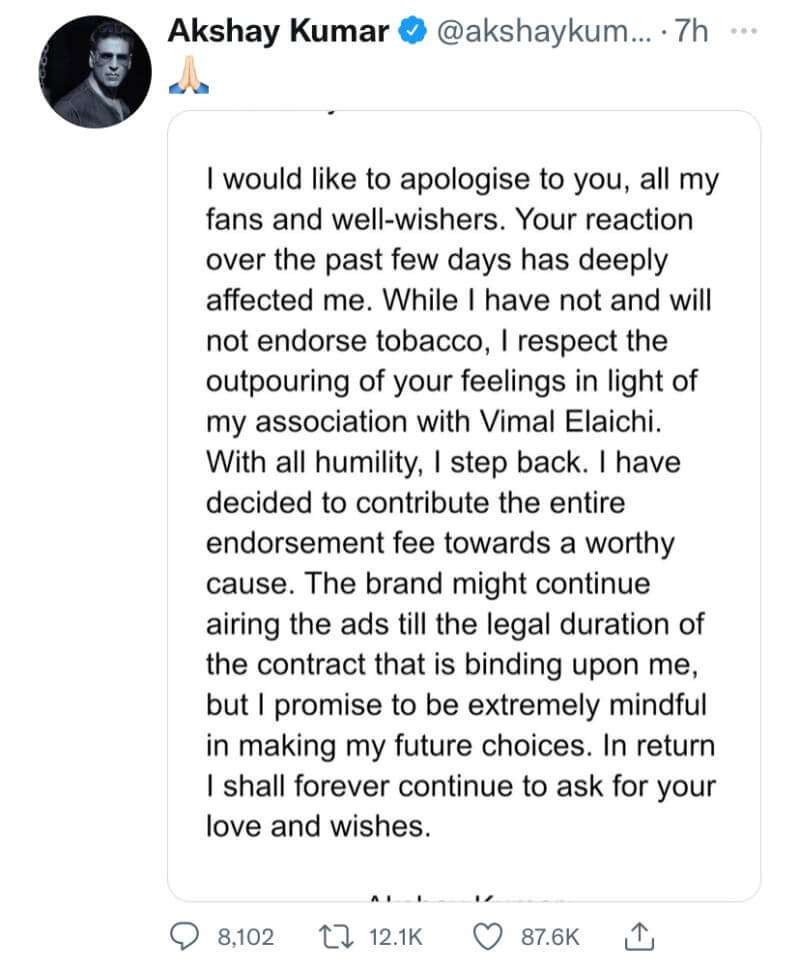
There is also an emerging trend where celebrities take a moral high ground by refusing to endorse brands and categories that do not match their avowed principles (e.g., actresses rejecting fairness products). These rejections make for positive PR and add to a celebrity’s public image while getting enthusiastic applause from fans.
It’s safe to say that today every celebrity comes with a shade of grey- a ‘Perfect Celebrity’ doesn’t exist anymore.
Hence, a brand’s celebrity dilemma
It’s clear that celebrity endorsement is fast becoming a double-edged sword.
It is a costly commitment, which if not executed well, can do more harm than good. The topic of celebrity endorsement naturally then leads to polarized opinions and debate.
While on the one hand some view it as an exercise in vanity, an apology for the lack of ideas, fraught with financial and even reputational risks, there are also others who view celebrity endorsement as a panacea- an express solution to hack their way to brand-building by quickly garnering reach and awareness.
We believe both these views are extreme. Celebrities are neither an easy nor a lazy way to build a brand. The reality is more nuanced.
To take a balanced view, let’s first look at some unchanging truths about celebrities that make celebrity endorsements as compelling a proposition today as it was, say a decade ago.

CHAPTER 2
Celebrity Endorsement: The Pros and Pitfalls
The proven benefits of celebrity association
Numerous empirical as well as peer-reviewed academic research papers have validated the positive impact of celebrity association. Indeed, if done well, celebrity endorsement can deliver multiple benefits, simply because of a few time-tested truths:
Celebrities bring recognition: the human brain is wired to better recognize and have a generally positive disposition towards familiar and famous faces.
This scientifically proven fact ensures that celebrities make a brand’s communication more recognizable. And this can prove to be a valuable asset, especially in today’s times when marketing clutter and noise are at an all-time high and brand communication needs to work extra hard to get noticed.


Celebrities render credibility: when famous personalities put their face to a brand, consumers tend to believe that the brand must be trustworthy.
This is especially relevant in inherently low trust categories like finance, healthcare etc. As a classic example, almost all real-money-gaming apps today rely heavily on celebrity endorsements to bridge the trust deficit attached to the category. That’s also the reason why at times celebrities are roped in to rebuild trust in case the brand faces a perception crisis.
Celebrities grant ubiquity: celebrities can be a powerful marketing channel with a massive reach and appeal that cuts across social backgrounds. A popular celebrity will appeal equally well to the harried executive who is rushing to the airport, as well as the cab driver who is ferrying him there. This is especially useful in the case of brands playing in utilitarian categories and wanting to build a ‘mass appeal’.


Celebrities cue stature: consumers today are well-aware of the fact that celebrity endorsement doesn’t come cheap. Roping in an “A-Lister” as the face of the brand makes for great optics and gives a tacit indication that the brand is a serious contender in the category. This is especially relevant for startups or upcoming firms that are trying to get into the consideration set dominated by well-established and well-recalled incumbents.
Celebrities can up the aspiration quotient: social media has become an interesting medium for both brands and celebrities. Celebrities can carefully curate an aspirational world and brands can integrate seamlessly into it. Celebrity endorsed brands thus make consumers feel that they can also have a slice of celebrity moonlight. Celebrities can be a powerful tool for a brand to create aspiration and justify its price-point while also proving invaluable in lifestyle categories like beauty and fashion where aspirational cues help to get the consumer’s buy-in.

However, the pros of Celebrity Endorsement also come with some potential pitfalls
Celebrity endorsements today operate in a changed consumer context. It’s a mistake to assume that merely roping-in a popular celebrity and amplifying the association through media would allow the brand to leverage the benefits of the association.
Brands must consider some riders before investing in a celebrity:
Consumers are well-aware that celebrity endorsement is a commercial contract: thanks to the power of social media and the media hype surrounding celebrity contracts, consumers are well-aware of the fact that a brand-celebrity relationship is based on mutual give and take. Further, celebrity endorsements are also coming under the radar of regulatory bodies, so the disclosure of commercial benefit might even become legally binding. It is, therefore, naïve on the part of a brand to assume that merely seeing a celebrity in an ad would translate into purchase intent.
In fact, a spray and pray approach with celebrity endorsement might even invite apathy or worse, lead to cynicism and derision, thereby nullifying the very purpose of the investment. To harness the celeb power, the brand needs to think deeply about how it can use the celebrity in a way that the association comes across as sincere, believable and heartfelt, and not just a transactional give and take.


Celebrity association escalates expectations and subjects a brand to greater scrutiny: celebrity association brings a new brand quickly into the limelight and sparks curiosity to know more about it. In fact, with the positive aura of celebrity behind it, consumers come with escalated expectations.
While celebrities make the brand more recognizable and might even get it into the consideration set, this does not mean that consumers wouldn’t do their due diligence before making the final choice. Judgement metrics, if anything, become more stringent. A poor experience in aspects like ratings, reviews, product quality and support experience is a double whammy as consumers quickly dismiss the brand as ‘all hype but no substance.’
Celebrity association might land brands into unintended controversies: interestingly, even as consumers view the brands-celeb association as a commercial give and take, they aren’t willing to disassociate the brand from a celebrity’s conduct in real life. In recent past we have seen umpteen examples where brands bore the brunt of opinion or stance of their respective endorsers.
This puts brands in a quandary- they want the association to come across as genuine, but they also do not want to be associated with the personal opinions of their endorsers. However, in reality, when an endorser takes a stance, brands too come in the line of fire. For instance, Snapdeal bore the brunt of public ire and was forced to issue a clarification when Aamir Khan (its endorser at that time) expressed his personal opinion on the state of affairs in India.
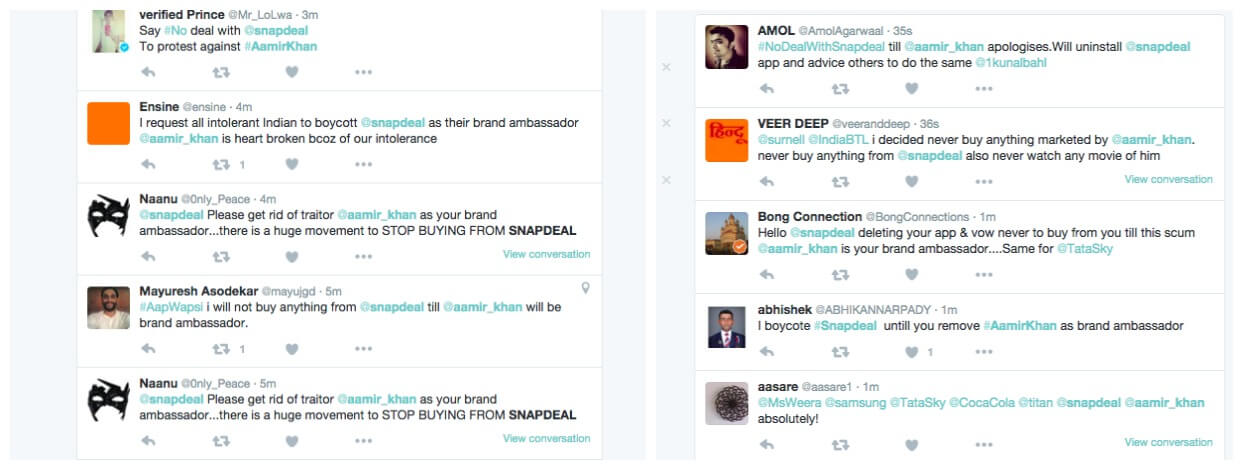
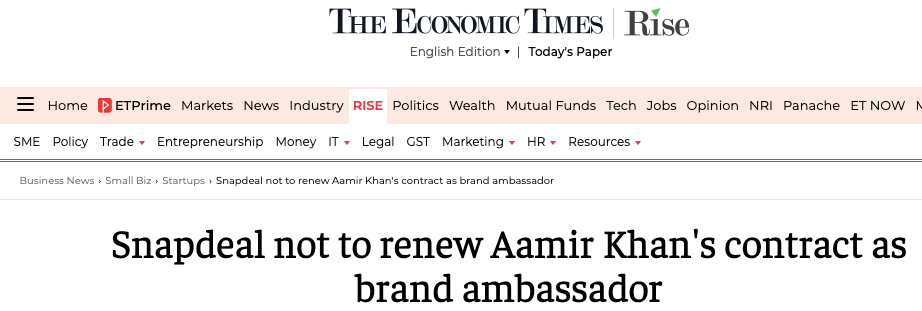
Celebrity association can lead to unfair misattributions: as unfair as it may sound, consumers are at times judgemental and even unreasonable about a celebrity-endorsed brand. Any issue, even if it is legitimately not in the control of the brand, is attributed to the brand’s misplaced priorities- of spending on celebrity glamour rather than investing in the consumer experience.
Especially in the case of celebrities associated with sports, if a celebrity fails to perform in their field, fans often make brands a scapegoat to vent their anger. The celebrity’s poor form is attributed to their diluted focus- thanks to their lopsided attention toward monetary rewards of brand endorsements.
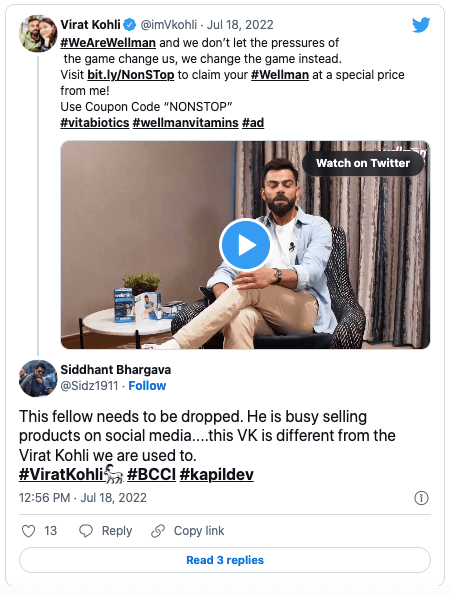
Celebrity clutter is real and leads to consumer fatigue: given that A-List celebrities with a pan-India appeal are few and almost every brand is pursuing them, celebrities have spread themselves thin across multiple categories and in some categories, it is not uncommon to find almost every brand being endorsed by a celebrity. To complicate matters, brands are often unable to enforce strict contracts and we have seen cases where celebrities switch to competing brands in the same category. All this leads to consumer confusion and fatigue.
Indeed, there have been cases where consumers remember the celebrity and category but not the brand, thereby ending up unwittingly helping the category leader!

Given this scenario, brands have an additional job at hand- to stand out amidst the celebrity clutter and ensure that they get uniquely benefited from the association. As an implication, brands need to be extremely clear about both picking as well as leveraging the right celebrity. Without this, celebrity endorsement could indeed become an exercise in vanity.
Net, it’s safe to say that celebrity endorsement is not a magic wand; it comes with its own riders, watchouts and best-practices.
CHAPTER 3
Celebrity Endorsement: Some key themes
There are many examples where brands have leveraged celebrities in a way that helped them reap the benefits of the association while staying clear of the pitfalls. Interestingly, these examples span a full spectrum- from cases involving deep collaboration to those where brands leveraged celebrities for a specific goal.
The common factor across all these is the fact that the brands were clear about why and how they wanted to leverage celebrity power.
Few themes in celeb-brand collaboration that have worked well:
1. Celebrities exemplifying & amplifying brand personality: while it should ideally be the primary rule for choosing a celebrity, the brand x celebrity personality linkage is often not perfect because there is a limited set of top celebrities with a pan-India appeal, limiting brands’ consideration set. But when brands are able to achieve a perfect match, the association comes across as genuine and the celebrities’ own fan-following also enthusiastically endorse and amplify its content, giving it a natural virality.
A classic case in point is the five year long prolific association of Ranveer Singh with Durex. A vibrant and youthful brand that’s known for its sassy, tongue-in-cheek content and one that intends to break down the taboo around discussions on sex found its match in the uninhibited persona of Ranveer.
The #DotheRex campaign, fueled by some amazing content, product launches and Ranveer’s raw energy and style, became a social media rage and delivered immense word of mouth for the brand. Durex is a good example of how a great personality – celeb match can work wonders for the brand.
2. Celebrities mirroring the brand story: celebrity stories are out in the open today and are enthusiastically lapped up by followers. These stories can be centered on a broad gamut of emotions ranging from inspiration and grit to success and achievement or even love and romance. Brands whose proposition seamlessly links to these stories can collaborate with the relevant celebrities. When brands do so, the association comes across as a heartfelt testimonial rather than a cosmetic endorsement. Many a times it inspires consumers to dig deeper to know more, thereby increasing brand engagement.
An interesting example of this is Truecaller’s association with Nawazuddin Siddiqui. Launched as its first ad blitz in India, “Take the right call” campaign narrated the story of the actor’s struggling days in his own words (and trademark no-nonsense style), and seamlessly integrated it with the brand benefits. The collaboration came across as persuasive and revealed some unknown facets of the actor’s story. This piqued curiosity and made this collaboration both noticeable and shareable.
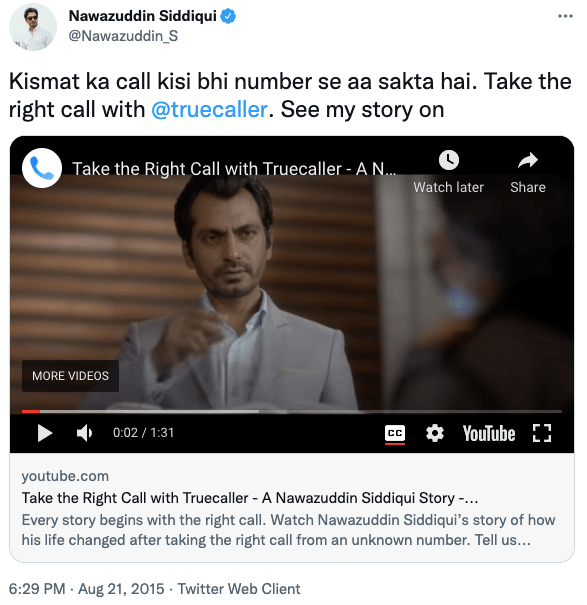
3. Celebrities used in a counter-intuitive way: in some cases, celebrities are used in a way that’s counterintuitive, creating a shock and entertainment value. This makes the brand content both shareable and viral. The storyline and innovative manner in which celebrities are used not only make consumers blink, but also spark a meme-fest and a spate of online chatter that works in the brand’s favour.
CRED is a good example of a brand that’s leading this trend. Starting from its initial campaign “Not everyone gets it” where celebrities like Madhuri Dixit and Anil Kapoor are shown as getting rejected in auditions to the much talked about “Indira Nagar ka Gunda” campaign where Rahul Dravid is portrayed as an impatient and angry hooligan, CRED has consistently been able to positively surprise its consumers by using celebrities in a way they least expect. Further, the brand seeds talking points and banter around its content on social media. This instigates curiosity and amplifies the reach. No wonder CRED is among those brands whose communication is proactively searched for and shared by the consumers.
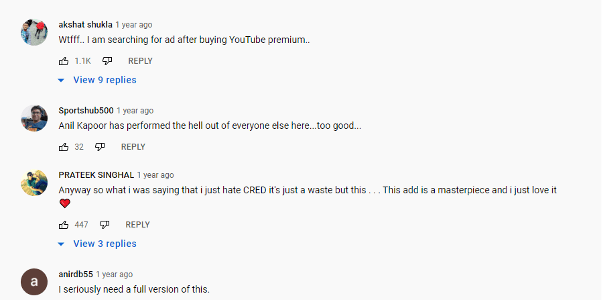
Another interesting case is when brands pick celebrities who are well-known for their craft but haven’t been overused by brands. When this is supplemented with clever creativity, the association doesn’t just establish a memorable celebrity-brand connection, it also helps to effectively communicate the brand’s proposition.
Recent example of Zepto using popular singers (Kailash Kher, Usha Uthup and Shankar Mahadevan) in a creative way to establish its quick commerce proposition is a good example of this.



4. Betting big on next-gen celebrities: the celebrity landscape is wide and diverse- and today there are multiple avenues to spot high potential talent (e.g., OTT in entertainment, IPL in cricket etc.). The strategy of ‘catch them young’, where brands collaborate with high potential celebrities before they gather mainstream awareness isn’t just commercially lucrative, it also helps them ride on the success of these celebrities. In addition, by bringing on board a galaxy of high-caliber talent from different fields, the brand presents itself as a dynamic and youthful player.
Betting on a celebrity before he or she becomes a household name is a risky proposition. Brands that have got it right need to be given credit for their intuition that the talent will make it big in the near future.
boAt has pioneered and perfectly executed this strategy. Launched in 2016, the brand positioned gadgets as fast-fashion and portrayed its galaxy of young and emerging celebrity endorsers as a tribe of “boAtheads” carrying a distinctive sense of style.
boAt has consistently spotted and on-boarded high potential talent from the fields of entertainment, cricket and music- the key passion points of its young consumer base.
It on-boarded Hardik Pandya, Karthik Aryan and Kiara Advani much before they became the stars that they are today.
This strategy has particularly suited boAt’s positioning as a challenger brand that brings a disruptive blend of style, price and quality in a space dominated by big legacy brands (Sony, JBL etc.). Interestingly, this is exactly the value that its celebrity ‘boAtheads’ embody. And the growth of its celebrity endorsers in their respective fields is uncannily similar to that of boAt, which has gone on to become the 5th largest wearables brand by shipments in the world and has captured 33% market share in India*.
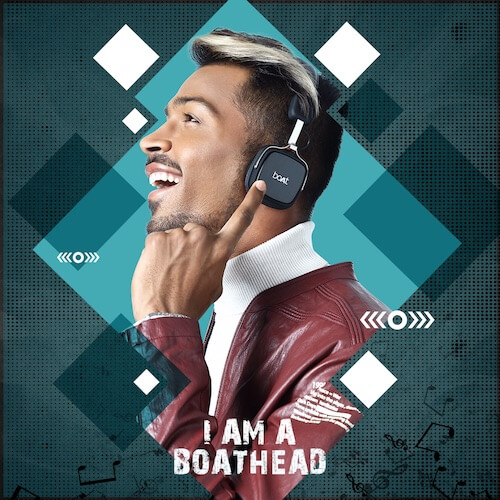
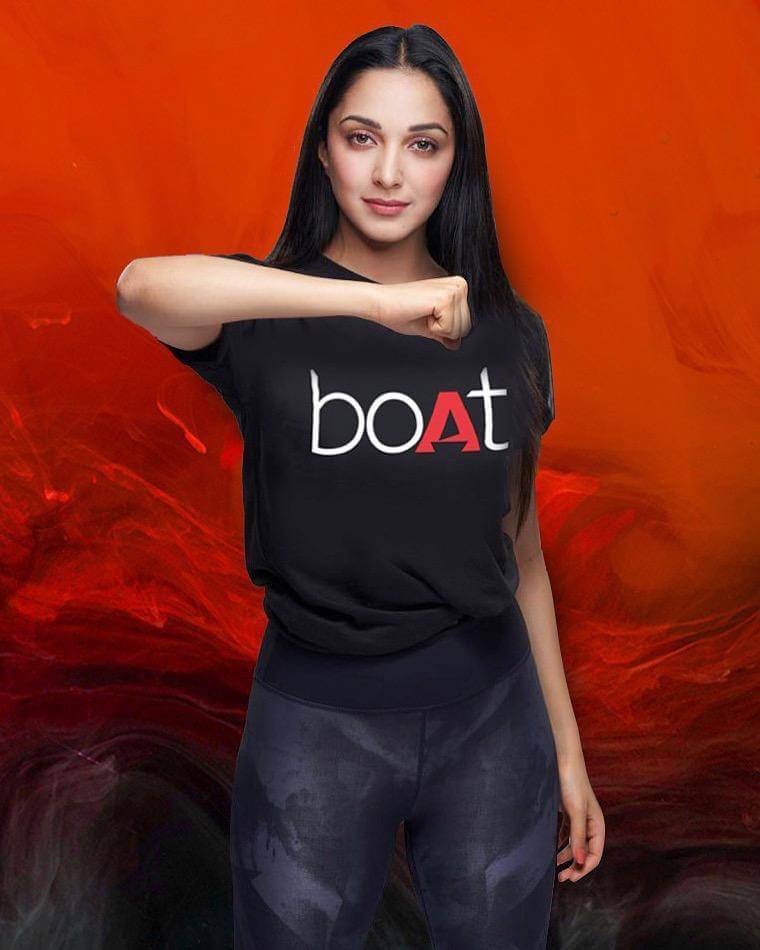
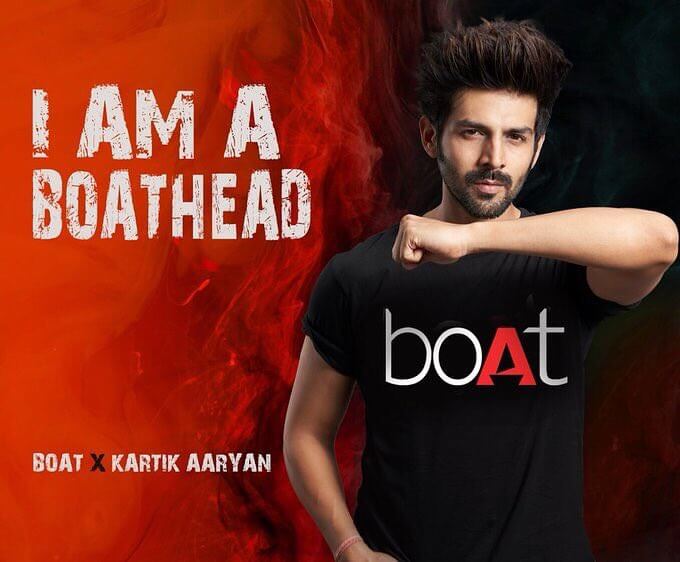
5. Emergence of ‘Celebrity Couples’: celebrity relationships have always been a matter of intrigue and curiosity but in the age of social media, celebrity couples have become a powerful phenomenon and emerged as a brand in their own right. This is reflected in the trend of concatenated nomenclature- from Saifeena to Virushka to the most recent ones- DeepVeer and Vickat.
With carefully curated photo reels of their moments of togetherness available in the public domain, these ‘Couple brands’ evoke aspiration and give relationship goals. No wonder then, collaboration with ‘Couple brands’ is a wonderful opportunity to create a communication that not only gives a brand access to a much larger fan base but also subtly acknowledges the trend of joint decision-making among couples on almost all product categories.
A good example of a brand leveraging this trend is the ‘Wedding Vows’ ad by Manyavar featuring Virat Kohli and Anushka Sharma. Launched at a very contextual moment (2 months before the actual marriage of Virat and Anushka), the ad beautifully plays up the chemistry between the couple as they exchange vows. Given that they were just about to tie the knot in real life, it became a case of reel-life mirroring real life and generated massive word-of-mouth that helped the brand garner appeal among the fans of both celebrities. So much so that when Virat and Anushka actually married, many even confused Manyavar’s ad grabs with actual wedding pictures of the couple!
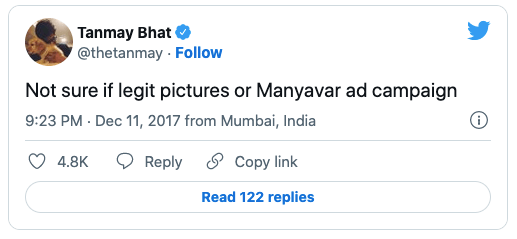
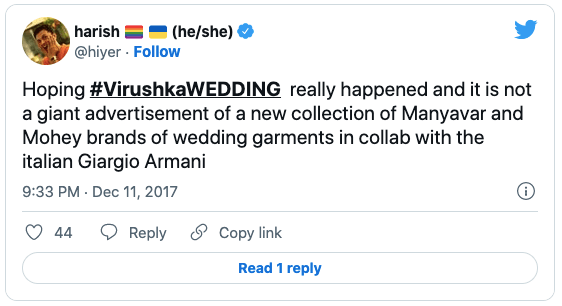
6. The rise of invested celebrities: celebrities are going a step further and putting their skin in the game by taking co-ownership. This can take several forms- celebrities can take equity/stake in a brand, they can get into royalty arrangements or even start a licensing partnership.
It is important to note that in each of these cases there is a good match between brand and celebrity ethos. In some of these cases, the rub-off of celebrity personality is so strong that the brand becomes inseparable from the celebrity (e.g. Virat Kohli x WROGN, Hrithik Roshan x HRX, Salman Khan x Being Human)
This is a win-win situation for the brand and celebrity. The celebrity becomes much more committed to the brand’s growth and this commitment reflects in the way they enthusiastically endorse the brand. In many cases, they even play up their role as co-creator and proactively evangelize the brand in their circle.
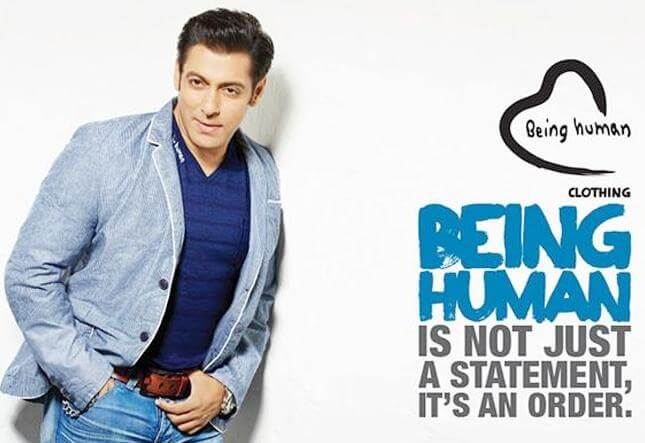
7. Celebrities turning into Founders and Founders turning into celebrities: a common trend in the West has hit the Indian shores too with many Indian celebrities launching their own brands.
An example of this trend is Seven, an independent fitness fashion and apparel brand by MS Dhoni. Similarly, the Bollywood couple Riteish and Genelia have ventured into ready-to-eat foods with their plant-based-meat brand “Imagine Meats”.
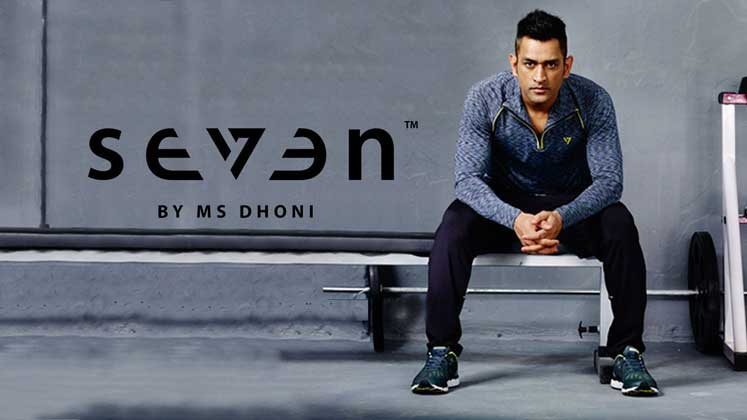
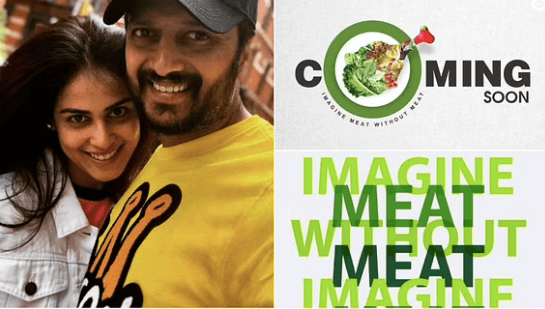
While celebrities turning into founders is muddling the celebrity endorsement landscape and might even create an apparent conflict of interest, a very interesting reverse trend- of Founders turning into celebrities- is also at play.
In the recent past, especially in startups, we have seen founders leading from the front. They play a pivotal role in narrating their brand story and come across as espousing a clear purpose.
A more overt and literal manifestation of this trend was seen in Shark Tank India where founders like Ashneer Grover (BharatPe), Aman Gupta (boAt) and Vineeta Singh (Sugar Cosmetics) became household names, thanks to their appearance as judges in the show. Shark Tank India has given these founders mainstream awareness and has brought them squarely into a ‘mass limelight’ beyond their fame in start-up circles.
And much like celebrities, their lifestyle snippets have made it to page-3 news and their sound-bites on the show have become popular memes. This celebrityhood of course has given their respective brands a big boost in awareness and consideration.
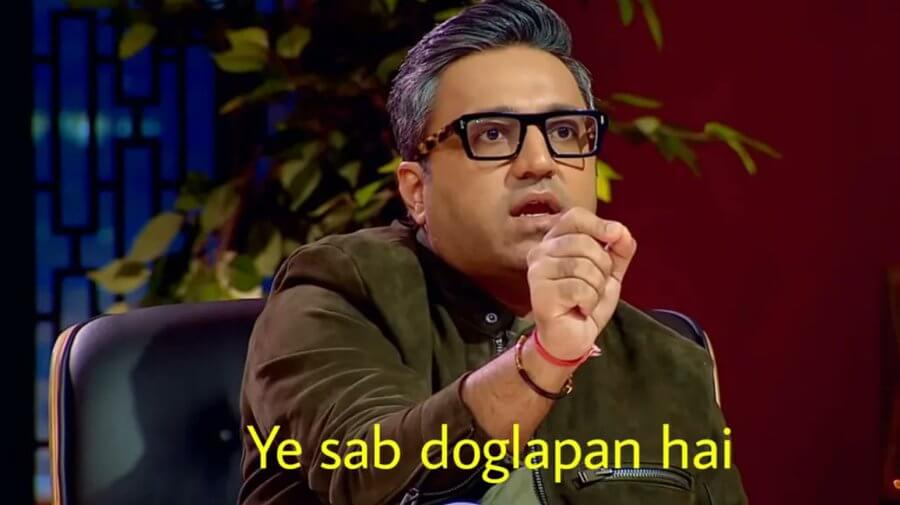


CHAPTER 4
Our 5C Framework for celebrity endorsement
Considering the changes in the consumer, media and celebrity context and the learning from brands that have got celeb endorsement right, we have deduced 5 principles that brand managers must consider before climbing onto the celebrity bandwagon.
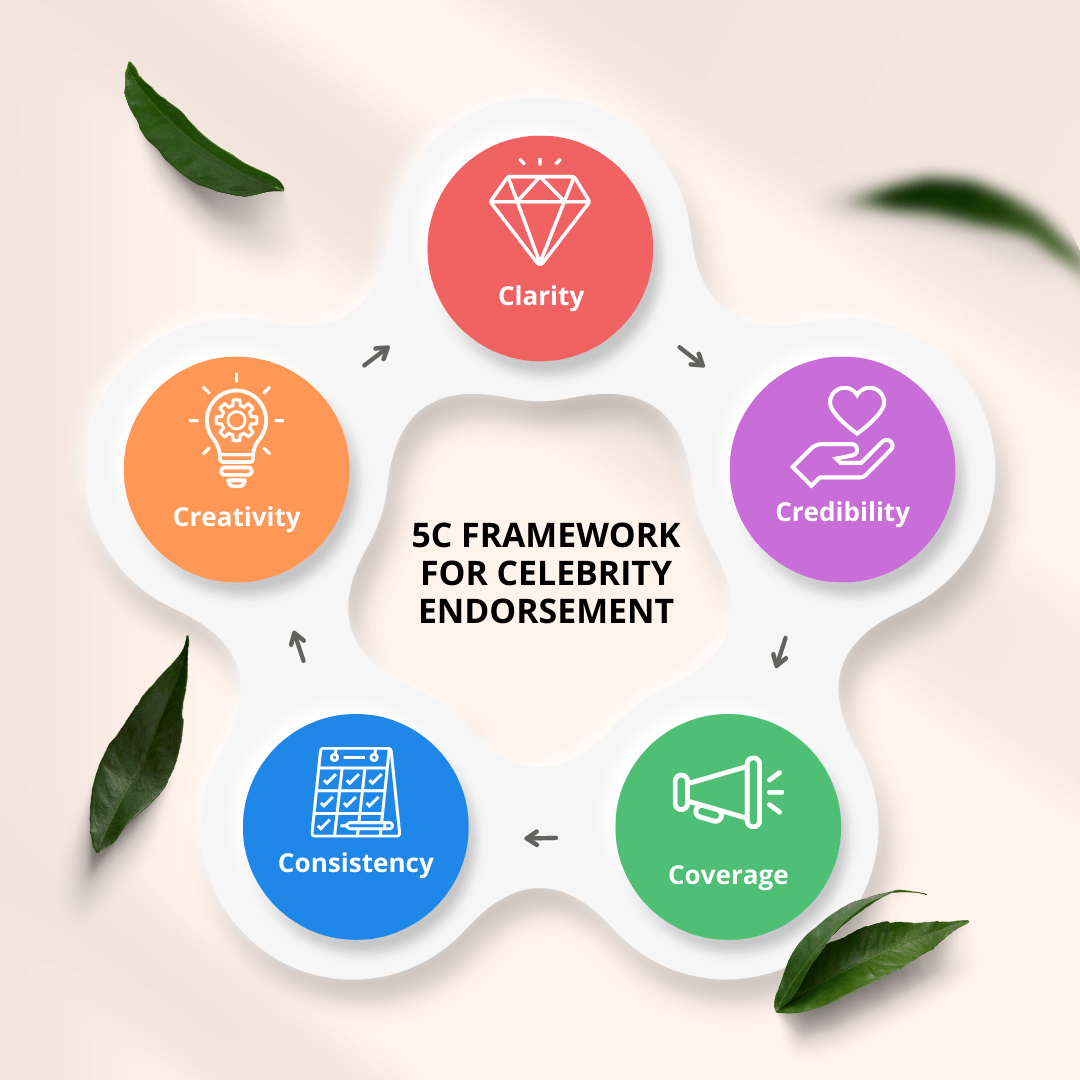
1. Clarity
The first and basic question for brands to address is: ‘why do we need a celebrity?’. Addressing this WHY is absolutely critical in getting the association right. It is important to note that the answer to this ‘Why’ might range from a deeply strategic one (e.g. building long-term brand credibility) to a tactical one (e.g. creating a short-term awareness spike to give the brand an initial momentum). However, there are also some clear red-flag reasons to watch out.

Celebrity endorsement shouldn’t be driven by FOMO- neither celebrity FOMO (because a celebrity has suddenly shot into the limelight and is enjoying high hype) nor competitor FOMO (“because our competitor has a celebrity”).
In addition, brand managers shouldn’t expect celebrities to fix their brand’s fundamental problems (e.g. product quality or service standards). As we mentioned before, this could potentially backfire because celebrity endorsement increases brand scrutiny.

2. Credibility
The second aspect to ponder is whether the celebrity we pick carries the desired credibility to address the “Why” of the brand. In many cases, brands may feel that putting a famous face to the brand will build credibility by default but consumers are more intelligent than that. While a popular A-Lister will definitely make a consumer blink and take notice, unless the brand values mirror those of the celebrity, it is tough for the brand to standout.
In case this link is tenuous, there is a high chance that the endorsement would be lost in celebrity clutter. This is a common trap that brands fall into.
3. Comprehensive Coverage
Once on board, a brand should leverage the celebrity with a comprehensive 360-degree plan. Brands must ensure that the coverage not only includes the brand’s touchpoints (both ATL and BTL) but also leverages the celebrity’s social media clout.
The coverage Plan should also focus on generating “Chatter”. Leveraging influencers and the celebrity’s own circle to create hype and conversations around the celebrity’s association with the brand can help the brand cut through the celebrity clutter.

It is also very important to have a proper coverage plan in place along with a budget before signing the dotted line on a celebrity agreement. Proper planning ensures that the brand has allocated the right budget to make the right noise and eke out maximum mileage out of the association, over and above the cost of onboarding the celebrity.
Remember, it’s the amplification plan that’s going to really move the needle for the brand. Underinvestment in celebrities is a very costly mistake.

4. Consistency
To get the most out of the association it’s important that the brand sees the celebrity as a strategic asset rather than a ‘moment marketing tool’ that can be dispensed with depending on what is trending. The most memorable celebrity collaborations are the ones where brands build a strong linkage and recall with celebrities. It helps to build a symbiotic relationship between the celebrity and the brand. While the brand benefits from consistent communication, celebrity reciprocates the gesture by going the extra mile to promote the brand.
Consistency in celebrity endorsement is all about using celebrities over a long term while inducing freshness in communication.
A watch out here is to ensure that consistency doesn’t make the brand’s communication monotonous or boring. It is important to induce ‘fresh consistency’ with every new campaign. For instance, Cadburys cleverly leveraged its association with Amitabh Bacchan with a series of engaging campaigns.

5. Creativity
Last but not the least, given the high celebrity clutter, to maximize the ROI from celebrity association a brand needs to think out of the box for the execution to stand out and create a long-lasting impact. Unfortunately, this also happens to be one of the most underrated aspects of celebrity endorsement.

Contrary to popular perceptions, the job of a marketing team really begins only after the celebrity is on-board.
In Conclusion
While celebrity endorsements potentially deliver some well-proven benefits, whether or not these benefits actually accrue to the brand completely depends on how the brand chooses and how it uses the celebrity. It’s safe to say that celebrity endorsement is no magic wand, it comes with its own riders, watchouts and best practices.
We hope that the examples and principles in this article would help you get your strategy around celebrity endorsement right.
Got any comments, feedback or suggestions? Let us know at freeflowing@winnerbrands.in
We read all your emails!
We help brands leverage the power of top marketing talent.
Click here to know more about us and to see all the open jobs we have with us now.


BusyBeeBrands
BusyBeeBrands, a boutique brand consulting firm, has worked with both new-age and challenger brands across 35+ categories to help them define their brand and communication strategy. Know more about us at BusyBeeBrands.
